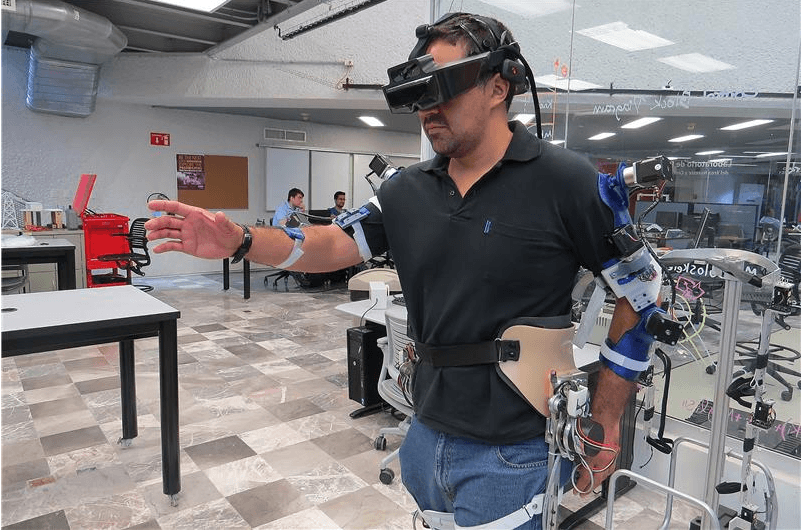Sep 22 2016
To fulfill its tasks, the robotic suit uses artificial intelligence and augmented reality
 Exoesqueleto “desarmable” e “inteligente”
Exoesqueleto “desarmable” e “inteligente”
Exoskeletons are mechanical structures applied externally to the body and its functions is the improve movement, hold the body of people suffering from an injury or increase physical strength to lift heavy objects.
To improve and extend the functionality of these devices, graduates of Technology Monterrey (ITESM) develop an exoskeleton that works with artificial intelligence and is made up of several independent parts to rehabilitate specific body parts as joints through augmented reality. The device acquires motion with brain or muscle signals and measures simultaneously translated by the apparatus noninvasively.
Dr. Ernesto Rodríguez Leal, professor at the ITESM, explained that the device can acquire motion by a headband containing electrodes themselves are responsible for receiving and calculate the electroencephalographic signals emitted by the brain and electromyographic produced by muscles. These electrical impulses go to a microprocessor which makes the task of sorting and translate the signals that move the device using artificial intelligence algorithms.
In addition, the specialist said that in addition to serving as a support for people with some injury or paralysis and serving as assistant movement, the exoskeleton contains a viewer augmented reality showing three-dimensional spaces to be traversed by the patient routines rehabilitation work in the body part required.
On the other hand, also a researcher at ITESM campus Monterrey, said the exoskeleton consists of rigid links aluminum and carbon fiber with gears and DC motors whose function is to convert electrical energy into mechanical and apply it on the joints according to the patient's need. In turn, the device has sensors called accelerometers that are what determine the position of each link to thereby indicate and determine the control algorithms of each motor coordination.
The royal technologist stressed that the robotic suit patented and is designed to help an elderly person or with mobility problems to stand, move, sit and balance. It should be noted that candidates use the exoskeleton are previously trained, so that the computer can identify and classify their brain signals. A date has already been tested and have clinical test protocols of patients.
Rodríguez Leal emphasized that the device would be accessible and its design can be purchased parts, ie, can be made independent joints with artificial intelligence depending on the situation you need mobility.
Finally, the mechanical engineer also added that research and experimentation is carried out at the National Robotics Laboratory CONACYT in the Tecnologico de Monterrey and is looking for financial support to bring the design to market.
Source: http://www.invdes.com.mx/